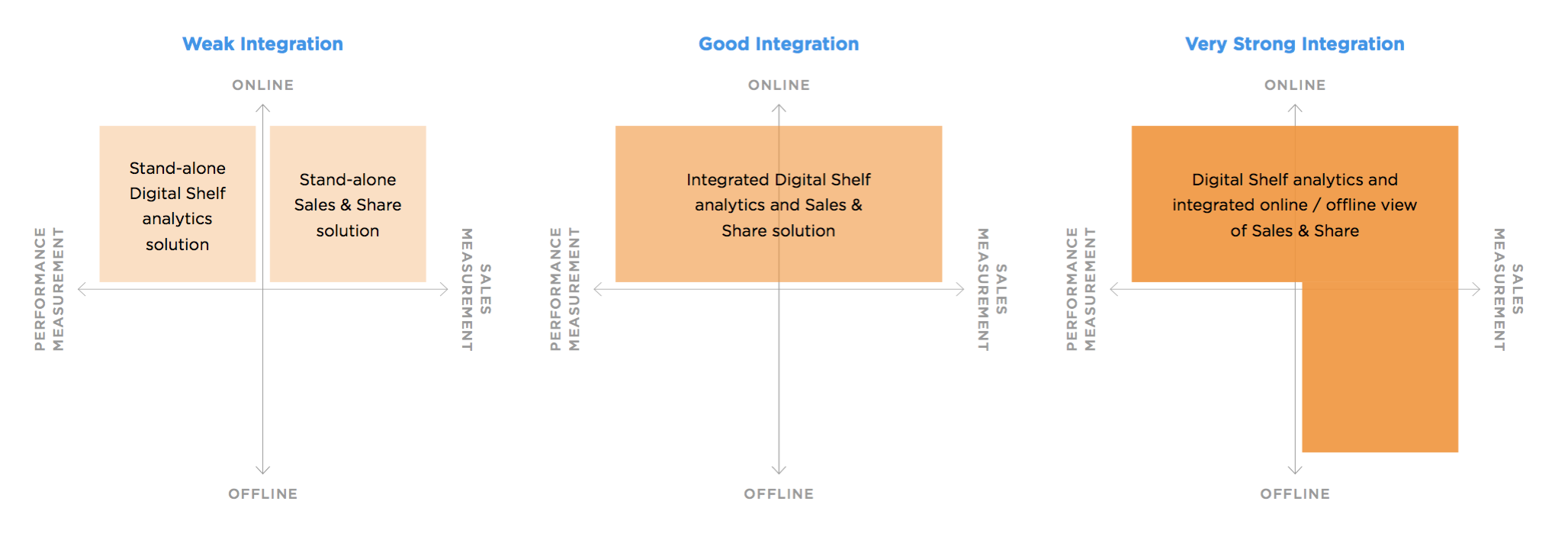
Time and time again, we hear eCommerce Directors from leading brand manufacturers explain they’ve been flying blind without access to digital shelf analytics to evaluate how their brands and products are performing online – and most importantly, how they benchmark against the leaders in their category.
The reality is you can’t manage what you don’t measure, and understanding how your products are positioned and performing at the digital shelf is critical in order to make smarter, faster decisions to grow your online sales.
If you’re considering an eCommerce analytics provider to help measure your online performance in 2018, our Selection Scorecard covers the five important questions to ask when identifying the right provider for your needs.
Q1. Can the provider help me navigate the difficult world of eCommerce?
The question of ‘Where should be I start?’ is a common one and often the choices can seem overwhelming. Which retailers should I prioritize? In which markets? For which categories and brands?
Ensure that the provider has deep domain expertise and can work with you to give you the right foundational review. In essence, ‘you don’t know what you don’t know’, so you need to take a holistic view of your online performance before you do anything else.
The best providers will make experienced analysts available not only to help you understand the data, but to focus on what it means and what to do. The focus can then shift to setting targets and continuous improvement.
Q2. Does this provider’s technology offer all the features and functions I need?
There are many hurdles a shopper must pass through to purchase your product and you want to make sure your provider can give you a complete view of your performance across these critical areas, in one platform.
In order to close the loop on which digital performance drivers (such as product availability, search ranking, or product content) are having the greatest impact on sales, check whether the provider can integrate digital shelf metrics with sales and share outcomes. Brands that understand which performance drivers result in the highest sales impact can create a powerful ROI business case for more budget, resources, and internal support.
Can the provider customize scorecards, dashboards, and alerts based on team members’ roles and responsibilities—and according to which retailers, brands, categories and regions they run?
And crucially, ask if they can deliver digital shelf analytics at any retailer, in any country, in any language. If you’re a global brand manufacturer, you’ll likely want to measure eCommerce performance across many different markets and retailers – therefore having access to a global scorecard that helps you identify how you’re tracking at this macro level will be critical.
Q3. Can this provider grow with my company as eCommerce grows and changes?
The eCommerce landscape is dynamic and fast moving with changes happening all the time. You’ll want to ensure the provider you choose has the technology to respond quickly, flexibly and at scale.
Specifically, ask them questions about their product roadmap, investment in technology resources (i.e. developers), and processes for gathering feedback from their users.
Q4. Will this provider seamlessly integrate with my other digital partners?
Almost every brand manufacturer that sells products online also sells products offline (via traditional retail stores). If the data sets you’re receiving are structured differently, then you have to spend a lot more time manually trying to reconcile them. And in the end, the data will never perfectly match up.
One big challenge manufacturers face when integrating offline and online data is the difference in category structure. In evaluating providers, it’s important to ask, “Are they good data integrators?” Either within their own app or via connectivity with outside partners, will they allow you to quickly and painlessly bring data sets together for deeper insights?

Q5. Will set up be flexible and fast enough to see a ROI, quickly?
There’s always a trade off between customization and time to deployment, therefore it’s important to choose a provider that offers the most flexibility.
Equally, consider how quickly you want to get up and running with your analytics solution so you can realize a return on investment as soon as possible.
Choose the right solution that can be implemented quickly, but which can also give you the flexibility to enhance your eCommerce analytics (monitoring more products, more retailers, more countries) as your needs develop.
Don’t leave your eCommerce strategy to chance
Despite the growing emphasis on eCommerce sales and growth, many companies are still continuing to use makeshift solutions – often basing their decisions on intuition alone.
To be successful, ensure your decisions are backed by real data and insight. The only way to grow your online sales and category share is to connect which digital shelf drivers are moving the needle on your sales performance – providing you with a complete 360 view of your eCommerce operations.
Whether you’re looking for your first eCommerce performance measurement solution, or you simply want to benchmark your current provider, download our complete Buyers’ Guide to help you narrow the field.


























